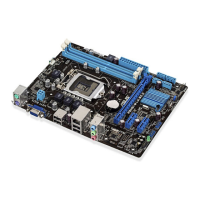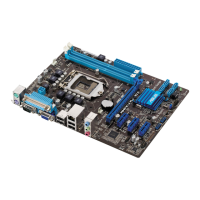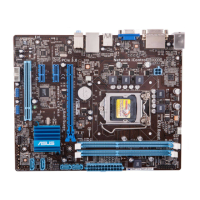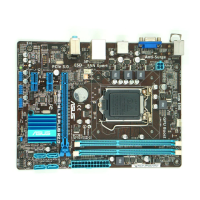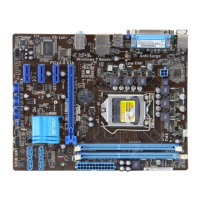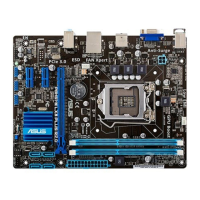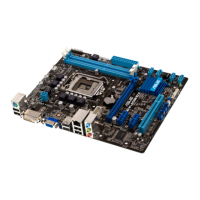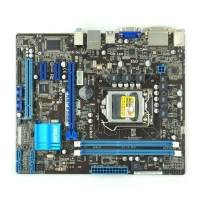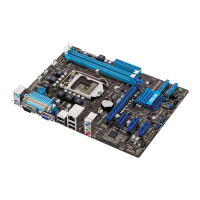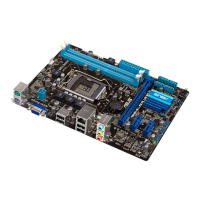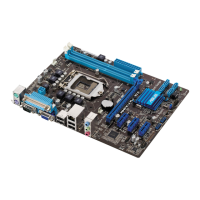
Do you have a question about the Asus P8H61-M LE/CSM R2.0 and is the answer not in the manual?
| Form Factor | Micro ATX |
|---|---|
| Chipset | Intel H61 |
| CPU Socket | LGA 1155 |
| Maximum Memory | 16GB |
| Memory Type | DDR3 |
| PCIe x16 Slots | 1 |
| PCIe x1 Slots | 2 |
| PCI Slots | 1 |
| SATA Ports | 4 x SATA 3Gb/s |
| USB Ports (Rear) | 4 x USB 2.0 |
| Audio Chipset | Realtek ALC887 |
| RAID Support | No |
| Memory Slots | 2 |
| Memory Standard | DDR3 1333/1066 MHz |
| USB Ports | 10 |
| USB Ports (Front) | 6 x USB 2.0 |
| Video Outputs | D-Sub |
| Audio | 8-Channel |
| LAN | Realtek 8111E, 1 x Gigabit LAN Controller |
Guidelines for preventing electrical hazards when handling the system.
Precautions for safe installation and handling of motherboard components.
Details on the CPU socket, supported processors, and the motherboard chipset.
Information on supported memory types, speeds, and integrated graphics capabilities.
Details on the CPU support, chipset, memory, and PCIe capabilities.
Information and procedures for installing the CPU onto the motherboard socket.
Detailed steps for correctly installing the CPU into the LGA1155 socket.
Instructions for mounting the CPU heatsink and fan for proper cooling.
Guide to installing and configuring system memory modules (DIMMs).
Guidelines for installing memory modules for optimal compatibility and performance.
Procedure for properly inserting a DIMM into the memory socket.
Procedure for safely removing a DIMM from the memory socket.
Information on using expansion slots for add-on cards.
Steps for installing various types of expansion cards into the motherboard slots.
Identification and function of ports on the motherboard's rear I/O panel.
Location and purpose of internal headers for chassis connections.
Procedures for managing, saving, and updating the motherboard's BIOS.
Using the ASUS Update utility to manage and update the BIOS from Windows.
Updating the BIOS directly from the BIOS setup utility using a USB drive.
Recovering the BIOS from corruption using the support DVD or USB drive.
Updating the BIOS in a DOS environment using the provided utility.
How to enter and navigate the BIOS setup program.
Configuring fundamental system settings like language, date, time, and security.
Configuring BIOS passwords for system security.
Setting or changing the administrator password for BIOS access.
Setting or changing a user password for BIOS access.
Settings for CPU and memory overclocking and performance tuning.
Selecting automatic or manual overclocking modes for CPU and memory.
Adjusting the ratio between CPU bus speed and DRAM speed.
Setting the operating frequency for DDR3 memory modules.
Automatic overclocking tool for enhancing system performance.
Fine-tuning DRAM timings for memory performance optimization.
Configuring CPU features like Turbo Mode and SpeedStep for power and performance.
Advanced voltage regulation settings for CPU and iGPU power delivery.
Adjusting CPU core voltage for performance or stability.
Adjusting DRAM voltage for memory stability and overclocking.
Configuring system boot devices and related options.
Defines the sequence of bootable devices for system startup.
Utility for updating the BIOS from within the BIOS setup.
